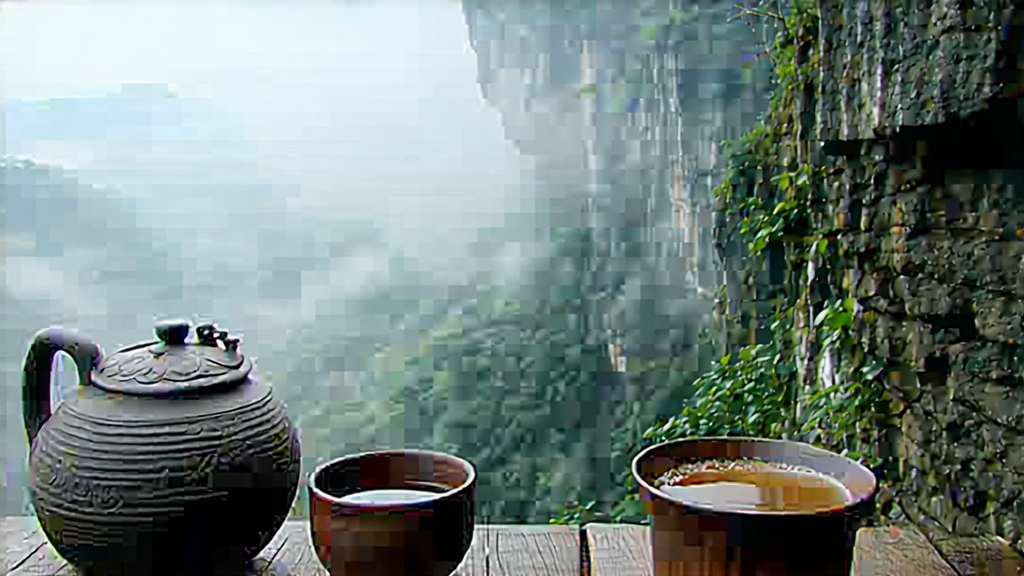
If oolong tea is the symphony of Chinese partially oxidized leaves, then Wuyi Shui Xian is its resonant baritone—deep, warming, and echoing with the minerality of a landscape carved by river and time. Known abroad sometimes as “Narcissus” or “Water Sprite,” Shui Xian is not a floral tea scented with narcissus petals; rather, its name pays homage to an immortal in local legend who first planted the cultivar beside a spring whose reflection resembled the bloom. Grown inside the 60-kilometer core of the Wuyi Mountains in northern Fujian, this tea belongs to the “Cliff” or “Rock” (Yancha) family, a subgroup of oolong whose leaves absorb the iodine-rich air, cinnamon-hued sandstone, and ever-drifting mist of a UNESCO World Heritage karst gorge. To drink Shui Xian is to taste the geology of a place Chinese poets once called “the number one scenic wonder in Southeast China.”
History: From Temple Garden to Global Cup
The earliest written record of Shui Xian appears in a 1684 county gazette that lists it among tribute teas sent to the Kangxi Emperor. Folklore pushes the date back further: a Qing-dynasty monk, dissatisfied with the astringency of seedling tea, grafted branches from wild trees growing in the “Ghost Cave” onto temple garden stock, selecting for fragrance over bitterness. By the late 19th century, tea merchants in Xingcun port were exporting roasted Shui Xian to Southeast Asia via the Maritime Silk Road, where miners in Malaya and Singapore prized its sweet finish after a humid shift. The 1980s saw a renaissance: state research stations released improved clonal varieties (e.g., “Qiannian Shui Xian,” literally millennium Shui Xian) while preserving ancient mother trees now guarded behind iron rails on Tianxin Cliff. Today, small-batch Shui Xian commands auction prices rivaling Burgundy grand cru, yet village co-ops still fire their tea with the same local lychee wood that scented their grandfathers’ workshops.
Cultivars and Micro-Lots
Shui Xian is both a place-named tea and a cultivar. The original “Old Bush” (Laocong) Shui Xian, defined as tea picked from bushes over thirty years old, yields a thicker amino-acid load and a signature “cong” aroma reminiscent of wet tree bark, orchid, and camphor. Growers also graft the Shui Xian plant onto stronger rootstocks such as Rougui or Qilan to create intra-specific hybrids that marry the nectar-like body of Shui Xian with the spice of Rougui. Within the 36 officially demarcated “Zhengyan” (true cliff) micro-plots, differences of ten meters in altitude or one hour in daily sunlight translate into cup profiles that cuppers can blind-identify: “Tiger Roar Rock” gives a peppery bite, “Nine-Dragon Gorge” a dark-honey smoothness, while “Three Pits and Two Gullies” infuses a cooling menthol note that lingers on the breath like wintergreen.
Craft: The Dance of Fire and Time
Plucking begins in late April when the standard “zhong kai mian” (middle leaf open) stage is reached—three leaves and a bud arched like a sparrow’s beak. After a solar withering on bamboo mats, the leaves are shaken in rattan drums every hour through the cool night to bruise the margins, initiating oxidation that proceeds until the grass-green leaf turns two-thirds copper. The critical “kill-green” step employs a 280 °C drum roaster for exactly seven minutes; one minute shorter and the tea will sour during aging, one minute longer and the floral top notes vanish. What distinguishes Shui Xian is its double charcoal roasting: the maocha is baked over a subdued lychee-charcoal pit at 80 °C for four hours, rested fifteen days, then re-baked at 60 °C for another six. Between firings the tea “sleeps” in earthen jars lined with cedar leaves that modulate humidity. Master roasters judge readiness not by timer but by the sound of leaves crackling when tossed—a metallic ring signals residual moisture below 5 %. The entire cycle can stretch three months, during which the tea loses 20 % of its weight yet gains decades